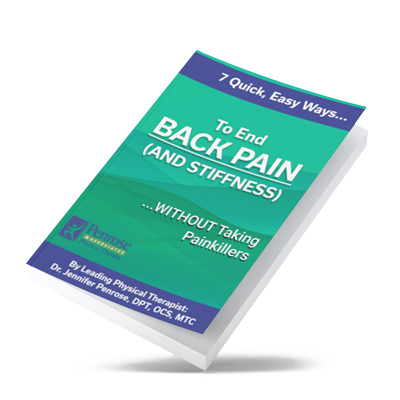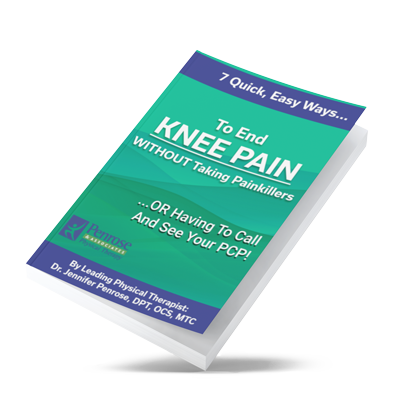LACEY (WA) – One of the FASTEST growing complaints we get from patients here at Penrose Physical Therapy is knee pain and it’s one of the areas that we treat the most as well.
But before I tell you why, ask yourself if any of the following sounds familiar as there’s a similar pattern that emerges with knee pain (before arthritis sets in). It starts with occasional clicks of the knee but nothing painful and you don’t think much of it. Then as the years go on, some of those clicks become painful and they start to ache a little bit more and it’s typically felt under the knee cap as well as inside of the knee. Now, simply walking around stores for a few hours at a time will begin to cause soreness. You’ll likely also notice that getting up from chairs or your couch has become increasingly difficult and you need a couple steps for your knees to ‘get going’. And last but not least, you notice that cold weather intensifies your knee pain.
If any of that did sound familiar, let’s discuss the “why” behind it! We’ll begin with a common trend, poor footwear. “Flats” and pump-style shoes are at the top of the culprit list for shoes that may cause knee pain mainly because they have zero support for your feet. If you wear this style of shoe on a daily basis the lack of foot support will eventually begin to affect the ligaments through your ankle/foot. The ligaments will likely begin to “loosen” which is rather important to note as they are responsible for holding the bones in your feet together. Unfortunately, as ligaments loosen, you’ll notice the stability through the ankle begins to decline causing the rest of the leg and hip to become overactive (due to compensation of poor ankle stability).
When this occurs, the most common physical response is for your feet to “roll in” (pronation might sound familiar if you’re a runner). If the feet roll in, it pulls and twists your lower leg, which inevitably twists your knee. This twist and pull is only subtle to start with, which is why you only notice a few clicks. But as it gets worse, the knee will start to become painful and damage is starting to be done. You should think of “clicky” knees as a warning sign for something needs to be corrected.
Here’s a few simple ways to help you check at home (it’s best to stand in front of a mirror):
- Which way are your knees facing? They should go straight forwards, not towards each other (“knocked knees”), or away from each other either.
- Bend your knees to do a small squat, as if you were going to sit down onto a chair behind you (any clicks?). In that position look to see where your knees are, they should be in line with your second toes. If not, we’ve got a problem somewhere.
- Stand up tall again – can you see an arch along the inside of your feet? You should be able to.
- Now try standing on one leg. Easy? Or does it feel like the inside of your foot and ankle is rolling in? If it’s rolling in or feeling unsteady then this could be because you have lost the support from the ligaments in your feet.
- If you get pain on the inside of your ankle, try standing on one foot and then lift up onto your toes – if this is painful or you’re unable to do it all, then see a Physical Therapist right away before any permanent damage is done to the muscle.
- When you step out of the shower next time, have a look at your foot prints on the floor. It should resemble something like a “C”.
This is just a guide for you to check your feet and knees at home yourself. But if you have any concerns about your knees at all, it’s best to get them checked by a specialist, like a Physical Therapist, who will also check your feet. If it’s a problem with your feet that’s causing your knee pain, don’t worry, we have the perfect solution that protects your knees and you can keep wearing your shoes safely.
The author, Jennifer Penrose, is a Physical Therapist and owner of Penrose Physical Therapy. If you have any questions about knee pain, you can call (360) 456-1444 or email jennifer@penrosept.com.




